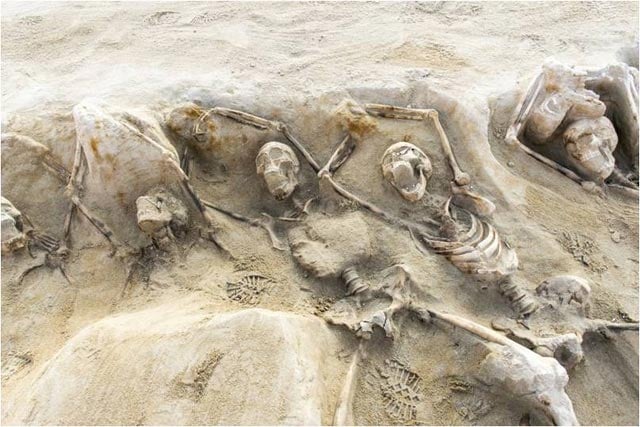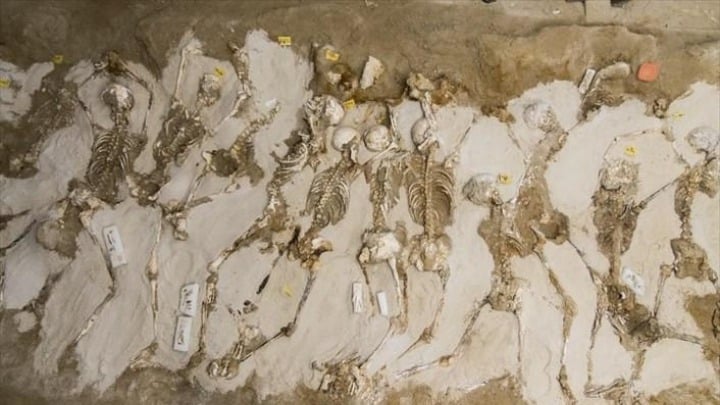
Scientists at Arizona State University are working on tooth enamel recovered from shackled skeletons found in an ancient cemetery south of Athens, Greece.
They hope to piece together the lives of people believed to have been executed in the 7th century BC. The cemetery at Phaleron was first discovered in the early 1900s and contains the remains of children, shackled men and even animals. The site was dated using pottery to the Archaic period in Athens.
The skeletons found were buried in a variety of ways. Most were interred in simple pit graves, but nearly one-third were infants and children buried in large jars. About five percent of the remains found are of cremations complete with funeral pyres, and there are a few stone-lined cist graves. One person was found buried in a wooden boat utilized as a coffin.
The shackled skeletons have puzzled researchers, as there are very few shackled deaths in the ancient world. These could indicate punishment, including capital punishment, and slavery.
Some researchers believe they may be followers of Cylon, a tyrant who attempted to take over Athens in the 7th century BC.
Major excavations happened from 2012–16 by Greek archaeologist Stella Chrysoulaki, but despite the excavation, answers to many questions — including the identities of those found in shackles — remained.

Tooth enamel can reveal the story of the shackled skeletons in Greece
To help answer these questions, experts turned to Arizona State University, and the Phaleron Bioarchaeological Project was created.
The project is directed by ASU Regents Professor Jane Buikstra and currently includes the work of ASU professors Kelly Knudson and Chris Stojanowski, as well as that of PhD candidate Julianne Stamer.
As part of the project, Stamer is writing a portion of her dissertation about the mass grave that contains three rows of individuals buried at the site of the Phaleron cemetery.
Anthropologists and archaeologists have termed the three graves “Esplanada.”
Stamer will also compare the individuals at the Esplanada to others buried in different parts of the cemetery. With help from METAL, Stamer takes about 30 milligrams of tooth enamel, which is equivalent to roughly 100 grains of sand or less.
Teeth can show your entire life story, Stamer says.
The Esplanada contains the remains of 79 shackled people believed to be victims of political violence. Some are shackled above their heads, some at their feet. Scientists have done a basic age and sex profile on the remains, and it is believed they are young men, Stamer said.
“We are getting back preliminary data on the residential history of the individuals of the site — this means we used strontium stable isotope analysis to assess if individuals buried at Phaleron were born near Athens or not,” she said.
With help from ASU’s Metals, Environmental and Terrestrial Analytical Laboratory, or METAL, Stamer is analyzing strontium in tiny samples from the men’s tooth enamel.
Stamer says that she does this with extreme care and respect for the people buried and that she is working with the Greek government.
Before Stamer takes any enamel, she makes 3D models of the teeth, documents all her work and has to comply with permits. She also said the samples she uses will be returned to Greece when she is finished; ASU doesn’t keep any of the tooth enamel.
For Stamer, this work is very important. “I think we have a lot we can learn about the men buried at the Esplanada,” she said.
“I think we can learn empathy for people in different times and places. We can learn how similar we are to others, yet how different we are. People like to hear about history and classical studies. Bioarchaeology adds a very humanistic side to that classical literature.”
